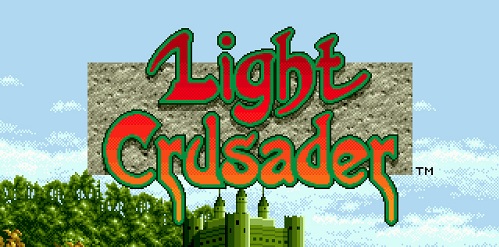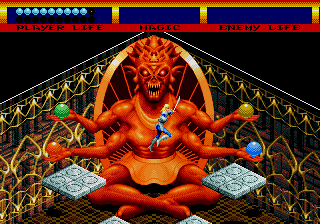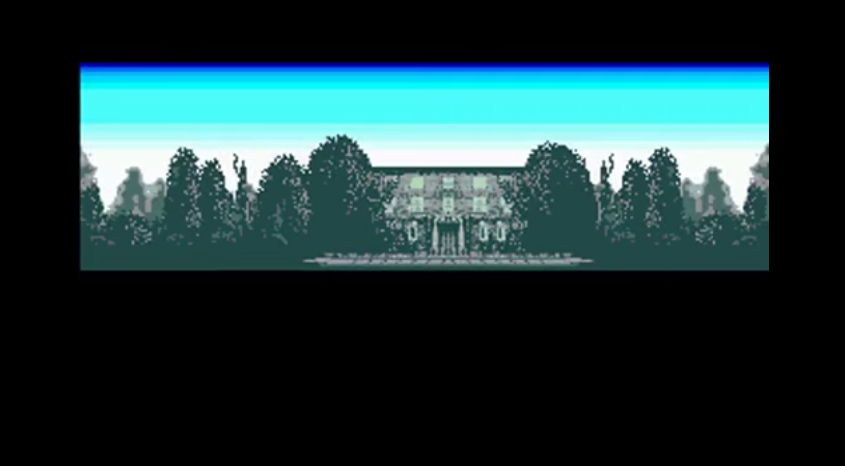 Light Crusader is the strange isometric action-rpg that Treasure put out for the Sega Genesis. I love Gunstar Heroes and Alien Soldier, but I’d never actually played Light Crusader. Having gotten really into the Ys games and action-rpgs in general lately I thought I’d give it a go once and for all. Welcome to the town/castle of Green Row, where villagers have recently been going missing and the King requests the help of a gallant knight to save him. So what’s his name? Epsilon Eagle? Smash Daisaku? Nope, it’s David. David the Knight
Light Crusader is the strange isometric action-rpg that Treasure put out for the Sega Genesis. I love Gunstar Heroes and Alien Soldier, but I’d never actually played Light Crusader. Having gotten really into the Ys games and action-rpgs in general lately I thought I’d give it a go once and for all. Welcome to the town/castle of Green Row, where villagers have recently been going missing and the King requests the help of a gallant knight to save him. So what’s his name? Epsilon Eagle? Smash Daisaku? Nope, it’s David. David the Knight
Light Crusader is unlike any of Treasure’s other titles. For one they’ve never made an RPG before or since this, and certainly never another with this art style. Instead of the usual anime-esque artwork from Gunstar or (understandly so) Astro Boy, Light Crusader’s art resembles that of a lot of western RPGs of the time. It’s actually quite close to something like The Immortal or maybe even the Ultima series. The entire game plays out from an isometric perspective, but you have freedom to move David however you want rather than get stuck to a grid. This also extends to the NPCs as well as David quite inexplicably has the power to abuse the game’s inhabitants more than even that thieving elf Link.
As David you need to meet the King and Queen at their castle in order to take on the role of saving the missing villages, who it turns out are being held in a hidden labyrinth underneath the graveyard. After embarking on this noble quest, you’re perfectly free to then shove both members of royalty in the corner of the room and then box them in with their own thrones. I have no idea why you’re allowed to do this, but given the game’s terrible signposting capabilities it works well to act out against the speech-thrift society you’re trying to save. To find out you have to go to the graveyard at all you need to find an oracle in one of the rooms in the castle (along with a save point and a teleporter than you’re never told about) and even then she doesn’t mention that you have to hit a particular grave in the graveyard to open the secret passage.
In their defence, it’s probably because they have no idea it’s there, or else they’d have maybe tried to save the villagers themselves. Why they expected the player to just figure it out is beyond me. Once you’re in the dungeon it’s a case of clearing each room through either combat, platforming or puzzletry until you eventually make it all the way to the bottom. Rather sweetly you’ll find save points along the way to record your progress and teleporters to send you back to town if you’re in need of any supplies. You’ll happen across food and equipment as you adventure, but stocking up at every opportunity is a wise undertaking, especially so if you spend a lot of time wandering through enemies as you’re completely lost. The game usefully tells you when you’ve found an important key or hit a switch to unlock a door, but without knowing where the hell that door is out of all the many locked doors you’ve found there’s only so far that help can actually -help-.
Handily the healing items you have are automatically used whenever you’re in danger, so small healing items are used initially to top your health up where as the greater ones wait until you’re near-death before being consumed. It’s a useful feature as the combat in this game is very imprecise. Actually, everything is imprecise thanks to the rutting isometric perspective. It’s quite difficult to know when you’re attack is going to hit an enemy or not, of which you only have a single slash or a diving slash if you attack and jump at the same time. Trying to chase an enemy without really knowing quite where he is in relation to your sprite is a little more irritating than it ever ought to have been.
You can luckily collect magical elements to perform ranged attacks with, which can alleviate some frustration. The really fun way this works is that you actually choose how many you want to use at once to create a different spell effect. Earth element on its own creates an earthquake, and fire on its own generates a fireball, but choosing both together allows you to cast an entirely new attack in the form of a Meteor. It’s a really smart way to work the magic system around, so if you actually have plenty of healing items you can fuse your healing magic into other elements and use it as ammunition instead.
A lot of the time you aren’t simply fighting though, as there’s plenty of puzzles and platforming rooms along to way to tax your brain (accompanied by a disembodied voice shouting ‘SOLVE THE RIDDLE!’, or at least something to that effect. Blame double dribble speak). These can actually be pretty clever, and although there are far too many block pushing puzzles for my liking the liberal physics of doing so actually alleviates a lot of potential stress. You can’t pull blocks though, which is annoying, but the way it’s worked into the puzzles is actually rather clever. The platforming too is pretty solidly put together, but let down along with the puzzles by the stupid stupid stupid stupid perspective issues. There’s one part in the first stage of the dungeon where you have to climb a tower via floating platforms which are already difficult to see where they are in comparison to you. This is made even worse when you cannot see the platforms you have to jump on that are behind the tower as of course you can’t turn the camera.
This is madness, and even in a game with just a single town and a very small amount of identical looking equipment, the one thing I think that lets it down more than anything else is that isometric viewpoint. It just serves to complicate otherwise very simple scenarios. I like fighting goblins and slicing them in half with well executed dive swings, but when I can’t tell if a boss monster’s final attack is going to splatter me with fireballs because I can’t see where the hell I am, we have a serious problem.
With that said, it’s actually a pretty damn good game overall. It breaks a lot of the usual tedium that the slow-paced dungeon crawls like The Immortal have by throwing new and interesting puzzles and environments at you from room to room, and yet as cerebral as it can be it still delivers a pretty fun if loose action experience. I especially like inserting a dragon as the first floor boss, I mean really why should I start off fighting large versions of slimes or jumping mushrooms? Kicking off with a dragon is a pretty exciting way to set up the next five floors. Treasure have definitely made better games since, and its clear why they haven’t tried to revisit this style of game since, but I’m always impressed with their willingness to experiment with some unfamiliar territory. Especially when they realise what it’d take Sega Sonic 3D Blast to figure out; ISOMETRIC VIEWPOINTS SUCK.
It may be a little light for an RPG, but it delivers a satisfying and lengthy action-platformer experience for anyone willing to seek it out. B-



